Marketing > QUESTIONS & ANSWERS > Chapter 6—The Communication Process and Consumer Behavior. All Answers (All)
Chapter 6—The Communication Process and Consumer Behavior. All Answers
Document Content and Description Below
Chapter 6—The Communication Process and Consumer Behavior TRUE/FALSE 1. Encoding involves activities undertaken by receivers to interpret marketing messages. ANS: F PTS: 1 2. The messa... ge channel is the path through which the message moves from source to receiver. ANS: T PTS: 1 3. Decoding is the process of translating thought into symbolic form. ANS: F PTS: 1 4. Interference and distortion in the communication process is called noise. ANS: T PTS: 1 5. Noise may occur at any stage of the communication process. ANS: T PTS: 1 6. Noise may occur during the encoding of a message. ANS: T PTS: 1 7. Semiotics is the study of meaning and the analysis of meaning-producing events. ANS: T PTS: 1 8. A field of experience is the sum total of a person's experiences during his or her lifetime. ANS: T PTS: 1 9. A symbol relation is formed when an object becomes a symbol of something else, called the referent, and when the object and referent have no prior intrinsic relationship but are rather arbitrarily or metaphorically related. ANS: T PTS: 1 10. Wheaties' claim that it is the "cereal of everyday champions" exemplifies the use of a simile. ANS: F PTS: 1 11. An allegory is a form of extended metaphor. ANS: T PTS: 1 12. Budweiser's advertising with frogs and lizards represents the use of an allegory. ANS: T PTS: 1 13. The CPM perspective views consumers as rational, highly cognitive, systematic, and reasoned. ANS: T PTS: 1 14. Exposure occurs when an individual becomes aware of the stimulus. ANS: F PTS: 1 15. Exposing consumers to the marketing communicator's message does not ensure that the message will have an impact. ANS: T PTS: 1 16. Hedonistic needs are satisfied when consumers attend to messages that make them feel good. ANS: T PTS: 1 17. Intense stimuli increase the probability of attracting attention. ANS: T PTS: 1 18. Television commercials for low-involvement products are particularly susceptible to clutter effects. ANS: T PTS: 1 19. The two main stages of perceptual encoding are feature analysis and delayed synthesis. ANS: F PTS: 1 20. An individual's mood can influence his or her perception of stimulus objects. ANS: T PTS: 1 21. Short-term memory serves as the center for current processing activity by integrating information from the sense organs and from long-term memory. ANS: T PTS: 1 22. The dual-coding theory holds that pictures are represented in the memory in verbal as well as visual form, whereas words are less likely to have visual representations. ANS: T PTS: 1 23. With the affect referral strategy, the individual simply calls from memory his or her attitude toward relevant alternatives and picks that alternative for which the affect is most positive. ANS: T PTS: 1 24. The compensatory heuristic consists of the consumer establishing cutoffs or minima on all pertinent choice criteria. ANS: F PTS: 1 25. The HEM perspective views consumers as pursuing objectives which allow them to get the most for their money. ANS: F PTS: 1 26. The word communication is derived from the Latin word communis, which means “communion.” ANS: F PTS: 1 27. Communication can be thought of as the process of establishing a commonness, or oneness, of thought between a message sender, such as an advertiser, and a receiver, such as consumer. ANS: T PTS: 1 28. The sender and receiver do not both have to be active participants in the same communicative relationship in order for thought to be shared. ANS: F PTS: 1 29. In marketing communications, the message channel is a communicator in some capacity. ANS: F PTS: 1 30. Encoding is the process of translating thought into symbolic form. ANS: T PTS: 1 31. The message itself is a symbolic expression of what the communicator intends to accomplish. ANS: T PTS: 1 32. The message channel is the path through which the message moves from source to receiver. ANS: T PTS: 1 33. Encoding involves activities undertaken by receivers to interpret—or derive meaning from—marketing messages. ANS: F PTS: 1 34. Feedback affords the source a way of monitoring how accurately the intended message is being received and whether it is accomplishing its intended objective(s). ANS: T PTS: 1 35. Noise is the stimuli that interfere with, or interrupt the reception of, the message in its pure and original form. ANS: T PTS: 1 36. Feedback is the stimuli that interfere with, or interrupt the reception, of the message in its pure and original form. ANS: F PTS: 1 37. The fundamental concept in semiotics is the sign. ANS: T PTS: 1 MULTIPLE CHOICE 1. The _____ is a person or group of people who has thoughts to share with some other person or group of people. a. channel b. source c. message d. receiver e. None of these are correct. ANS: B PTS: 1 2. The process of translating thought into a symbolic form is known as _____. a. encoding b. feedback c. noise d. decoding e. the message channel ANS: A PTS: 1 3. Encoding _____. a. is interference and distortion b. is the process of translating thought into symbolic form c. involves activities undertaken by receivers to interpret marketing messages d. is the path through which the message moves from source to receiver e. None of these are correct. ANS: B PTS: 1 4. When there are television commercials for the Ford Focus, television is the _____. a. receiver b. source c. message channel d. noise e. message ANS: C PTS: 1 5. When activities are undertaken by receivers to interpret marketing messages, this is known as _____. a. encoding b. decoding c. noise d. feedback e. message channel ANS: B PTS: 1 6. Semiotics is the study of _____. a. meaning and the analysis of meaning producing events b. languages c. sound d. needs e. attitudes ANS: A PTS: 1 7. A(n) _____ is something physical and perceivable by our senses that represents, or signifies, something to somebody in some context. a. symbol b. sign c. referent d. object e. point ANS: B PTS: 1 8. A sign relation is established in marketing communications when _____. a. a brand and a referent belong to the same cultural context b. a brand is characterized with a logo c. a brand is personified d. a metaphor is used e. a simile is used ANS: A PTS: 1 9. An object is a _____ when the object and referent have no prior intrinsic relationship but are rather arbitrarily or metaphorically related. a. sign b. symbol c. point d. space e. trademark ANS: B PTS: 1 10. The phrase "love is like a rose" is an example of a(n) _____. a. simile b. metaphor c. allegory d. nonsequitur e. gerund ANS: A PTS: 1 11. A(n) _____ uses a comparative term such as “like” or “as” to join items from different classes of experience. a. gerund b. nonsequitur c. allegory d. simile e. metaphor ANS: D PTS: 1 12. Which of these is an example of a metaphor? a. It is as fast as lightning. b. It is as slow as molasses. c. Wheaties is the breakfast of everyday champions. d. Love is like a rose. e. Hate is like a poison. ANS: C PTS: 1 13. Mr. Goodwrench is an example of a(n) _____. a. metaphor b. simile c. gerund d. allegory e. nonsequitur ANS: D PTS: 1 14. According to the CPM, consumer behavior is seen as _____. a. rational b. highly cognitive c. systematic d. reasoned e. All of these are correct. ANS: E PTS: 1 15. According to the HEM, consumer behavior is seen as _____. a. rational b. highly cognitive c. emotional d. systematic e. reasoned ANS: C PTS: 1 16. Exposure occurs when _____. a. consumers come in contact with the marketer's message b. consumers become aware of the message c. consumers are impacted by the message d. consumers store information in long-term memory e. None of these are correct. ANS: A PTS: 1 17. By definition, _____ simply means that consumers come in contact with the marketer's message. a. perception b. exposure c. attention d. comprehension e. interpretation ANS: B PTS: 1 18. Focusing on and considering a message to which one has been exposed is known as _____. a. perception b. exposure c. attention d. comprehension e. interpretation ANS: C PTS: 1 19. Maria has become desensitized to the billboard that is located in front of her office because she has seen it so many times. This is known as _____. a. habituation b. cognitive dissonance c. depression d. projection e. sourcing ANS: A PTS: 1 20. The perceptual process of interpreting stimuli is called _____. a. perceptual overloading b. perceptual encoding c. perceptual decoding d. cognitive dissonance e. habituation ANS: B PTS: 1 21. Combining stimulus features with expectations of what should be present in the context in which a stimulus is perceived is known as _____. a. attribution b. habituation c. feature analysis d. active synthesis e. perceptual mapping ANS: D PTS: 1 22. Short-term memory is also known as _____ memory. a. relevant b. working c. perceptual d. cognitive e. referral ANS: B PTS: 1 23. Information in short-term memory that is not thought about or rehearsed will be lost from STM in about _____. a. 30 seconds or less b. 3 minutes or less c. 6 minutes or less d. 9 minutes or less e. 12 minutes or less ANS: A PTS: 1 24. Changes in the context or organization of information in consumers' long-term memories is known as _____. a. perception b. learning c. comprehension d. exposure e. attention ANS: B PTS: 1 25. The representation of sensory experiences in short-term memory is known as _____. a. habituation b. concretizing c. active synthesis d. imagery e. feature analysis ANS: D PTS: 1 26. The _____ holds that pictures are represented in memory in verbal as well as visual form, whereas words are less likely to have visual representations. a. consumer processing model b. hedonic experiential model c. dual-coding theory d. attribution theory e. None of these are correct. ANS: C PTS: 1 27. The simplest of all decision heuristics is _____. a. affect referral b. compensatory c. conjunctive d. lexicographic e. disjunctive ANS: A PTS: 1 28. The heuristic in which the individual calls from memory his or her attitude toward relevant alternatives and picks the alternative for which the affect is most positive is known as _____. a. disjunctive b. lexicographic c. compensatory d. conjunctive e. affect referral ANS: E PTS: 1 29. The _____ heuristic has consumers establish cutoffs, or minima, on all pertinent choice criteria. An alternative is retained for further consideration only if it meets or exceeds all minima. a. disjunctive b. lexicographic c. compensatory d. conjunctive e. affect referral ANS: D PTS: 1 30. Which of the following is NOT a communications activity? a. source b. communication objective c. message d. stimuli e. feedback ANS: D PTS: 1 31. Which of the following is an allegorical character? a. Mr. Goodwrench b. The Pillsbury dough boy c. Mr. Clean d. Geico gecko e. All of these are correct. ANS: E PTS: 1 32. According to the CPM, consumer behavior is seen as _____. a. irrational b. illogical c. systematic d. metaphorical e. None of these are correct. ANS: C PTS: 1 33. Marketing communicators’ decisions on what information to provide to consumers, require knowledge of how consumers process, interpret, and _____ that information in making choices. a. integrate b. decide on c. retain d. agree on e. All of these are correct. ANS: A PTS: 1 34. Gaining exposure is a necessary but _____ condition for communication success. a. sufficient b. insufficient c. nominal d. unnecessary e. intergral ANS: B PTS: 1 35. Marketing communicators can most effectively gain the consumers’ attention by creating messages that truly appeal to their needs for _____. a. product-relevant information b. positioning-relevant information c. demographic-relevant information d. promotion-relevant information e. attention ANS: A PTS: 1 36. Research shows that advertising _____, whether real or perceived, reduces advertising effectiveness. a. spending b. duration c. intensity d. clutter e. humor ANS: D PTS: 1 37. The term comprehension is often used interchangeably with perception; both terms refer to _____. a. interpretation b. integration c. association d. adaption e. knowledge ANS: A PTS: 1 38. The second stage of perceptual encoding is called _____. a. feature analysis b. active synthesis c. comprehension d. perception e. heuristics ANS: B PTS: 1 39. Georgetown, Inc. is a manufacturer of surgical gloves. Georgetown’s advertising efforts appeal to medical professionals, capitalizing on the need for safeguards against infectious diseases. The copy in a recent magazine ad reads, “While you’re saving their lives, we’re protecting yours.” The magazine which features Georgetown’s advertisement is called the ______. a. decoder b. message channel c. encoder d. medium e. communication objective ANS: B PTS: 1 40. Georgetown’s advertising agency performed a copy test to evaluate a Georgetown magazine. They learned that three out of five hospital purchasing agents who saw the ad actually purchased the product. This favorable sales response illustrates _____. a. effective decoding b. absence of noise c. effective channeling d. positive feedback e. negative feedback ANS: D PTS: 1 41. Which of the following is an example of "noise"? a. The letters your company receives from consumers regarding their opinions about your advertising campaign. b. Information received from respondents to a market research survey. c. An advertiser’s uncertainty about what message appeal is most appropriate for a particular target market. d. None of these are correct. e. All of these are correct. ANS: C PTS: 1 42. The concept of meaning transfer suggests that marketing communicators attempt to transfer meaning from the culturally constituted world to their brands. Which of the following is NOT a good illustration of meaning transfer? a. Company A imprints an insignia of the British flag on its merchandise. b. Company B advertises that it is a proud sponsor of the Olympics. c. Company C always includes images of cowboys in its advertisements. d. Company D claims its automobile tires are the best because its technology is the most modern in the industry. e. Company E placing a cancer ribbon on every package. ANS: D PTS: 1 43. A certain manufacturer describes its product as “the Cadillac of swimming pools.” In this advertising message, the relationship between the car and the pool is a type of _____. a. sign b. signal c. simile d. metaphor e. allegory ANS: D PTS: 1 44. Which of the following does NOT represent the use of metaphor? a. Wheaties is the cereal of champions. b. Chevrolet is the heartbeat of America. c. Jaguar XJ-S is the stuff of legends. d. The Citizen Noblia watch is as beautiful as a peacock. e. Budwiesr is the King of Beers. ANS: D PTS: 1 45. The Yellow Submarine is a submarine sandwich shop that specializes in take-out orders. The sub shop advertises on radio stations close to meal times. Radio listeners may not willfully attend to the Yellow Submarine’s advertising; however, if listeners are hungry and notice that food advertisement is on, they may then consciously listen to see if the restaurant is within driving distance. This is best described as an example of _____. a. spontaneous attention b. involuntary attention c. relevant attention d. voluntary attention e. feedback ANS: A PTS: 1 46. Assume a consumer who has just eaten is driving down the road when an advertisement for the Yellow Submarine sandwich shop catches her attention. Although she is not hungry or in the mood to think about food, the radio ad has attracted her attention with a snippet of the music from the Beatles’ song “Yellow Submarine.” This consumer’s attention to the ad for the Yellow Submarine sandwich shop is best described as _____. a. nonvoluntary attention b. selective intention c. involuntary attention d. relevant attention e. feedback ANS: C PTS: 1 47. Let’s say that you are watching a TV advertisement. During the ad, a spokesperson talks about the attributes of the product. At the same time you are shown a picture of the product in use, the warranty information is flashed across the screen. Your ability to process the warranty detail is limited because _____ cannot handle the information overload. a. perceptual field b. sensory store c. short-term memory d. long-term memory e. knowledge structures ANS: C PTS: 1 48. Anita, who is in the process of shopping for a new car, is fascinated with a television commercial that relates the Porsche 911 to a thoroughbred horse, comparing the quality of design and aerodynamics of the car to the fine breeding and training of a champion race horse. This commercial is an example of _____. a. symbolic interaction b. animalistic referral c. schematic linkage d. concretizing e. allegory ANS: D PTS: 1 49. In order to better remember people’s names, Ann associates each name with an animal that most closely resembles the person’s physical appearance. Ann’s mnemonic device makes use of _____. a. heuristics b. schemata c. dual coding d. imagery e. knowledge structures ANS: D PTS: 1 50. While shopping to purchase a new car, Anita narrows her alternatives to three cars. She compares each attribute-by-attribute, and then finally chooses the one car that has, on balance, the best overall mix of features. Her preferred car is inferior to the other cars on a couple of attributes, but Anita allowed the car’s superior performance on the other attributes to make up for its disadvantages. What type of heuristic did she use? a. compensatory heuristic b. dual-coding heuristic c. affect-referral strategy d. noncompensatory heuristic e. lexicographic model ANS: A PTS: 1 51. Enrico is on his way to the mall to purchase a pair of running shoes. Assume he has established three minimal standards that a suitable pair of running shoes would have to satisfy (good arch support, well-know brand name, priced below $100). If he eliminates all brands that do not satisfy these three minima, his choice from among the remaining brands that do satisfy the criteria would adhere to which heuristic? a. conjunctive b. disjunctive c. affect-referral d. lexicographic e. compensatory ANS: A PTS: 1 ESSAY 1. Give three examples of how noise can enter the communication process. Discuss the effects each of these would have on the advertiser's message. 2. Give three examples of similes, metaphors, and allegories that are used by marketers. Evaluate them. 3. Discuss how two magazine advertisements for the same product would be different if one is based on the CPM perspective of consumer information processing and the other is based on the HEM perspective. 4. Discuss the implications associated with consumer miscomprehension. [Show More]
Last updated: 1 year ago
Preview 1 out of 14 pages
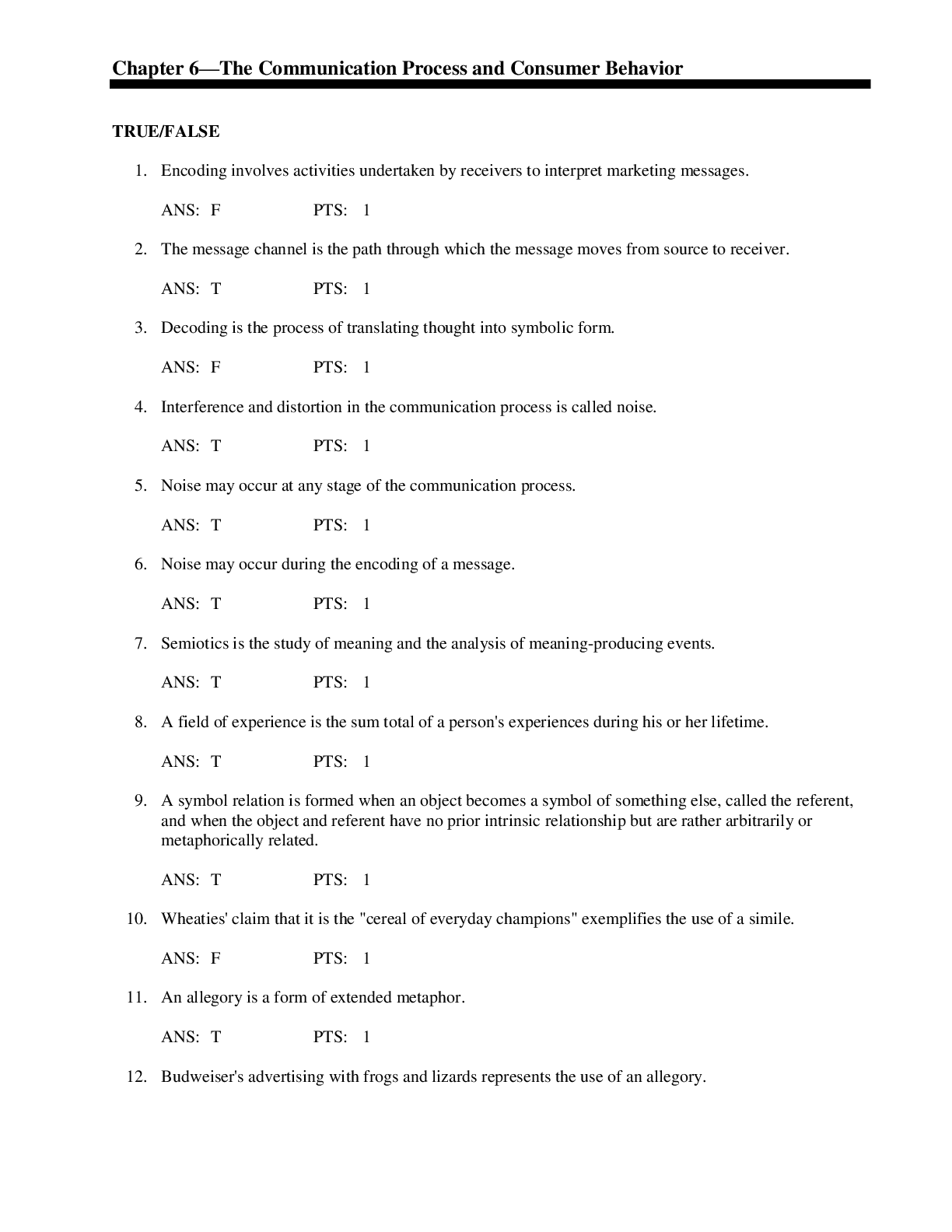
Reviews( 0 )
Document information
Connected school, study & course
About the document
Uploaded On
Nov 06, 2019
Number of pages
14
Written in
Additional information
This document has been written for:
Uploaded
Nov 06, 2019
Downloads
0
Views
107







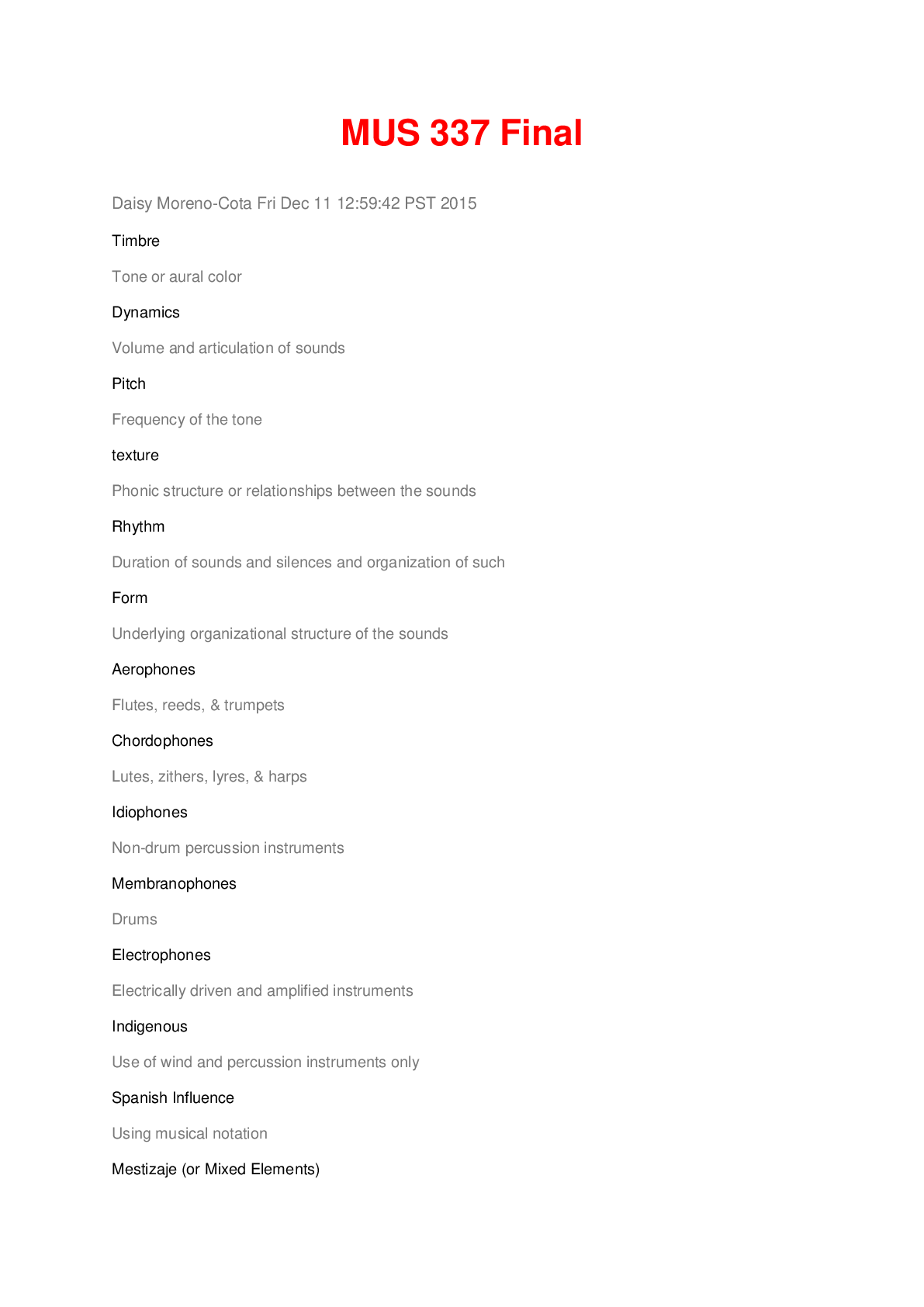




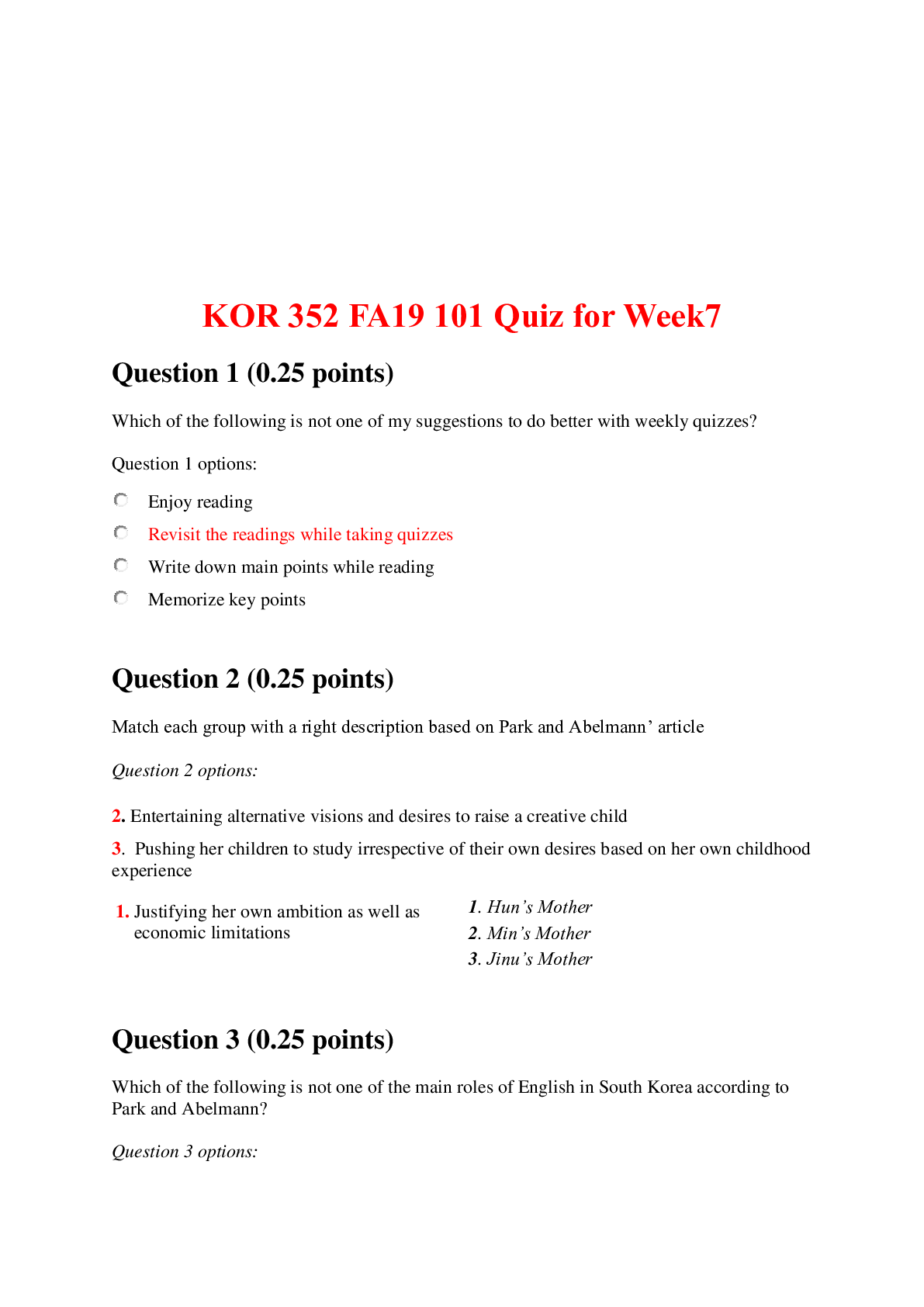


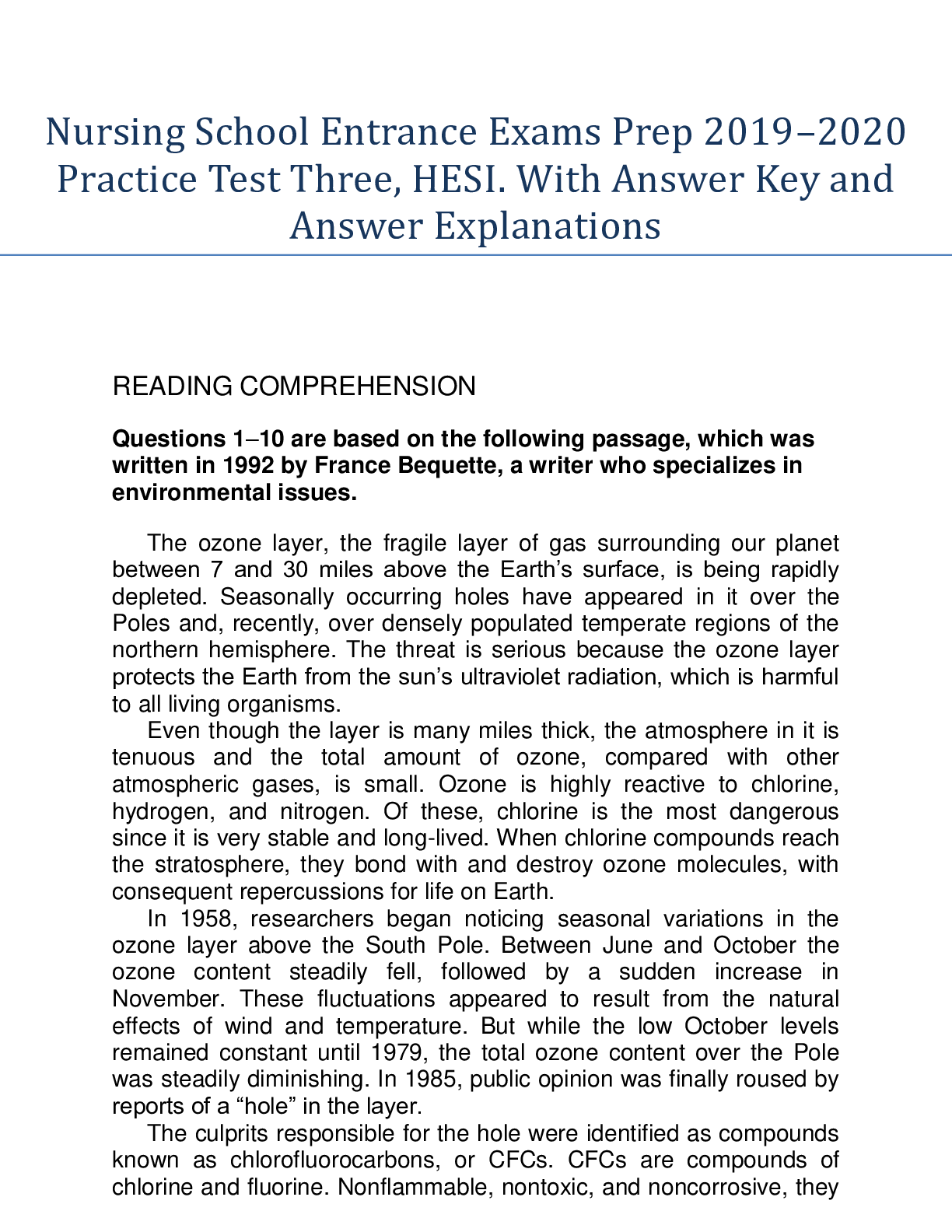
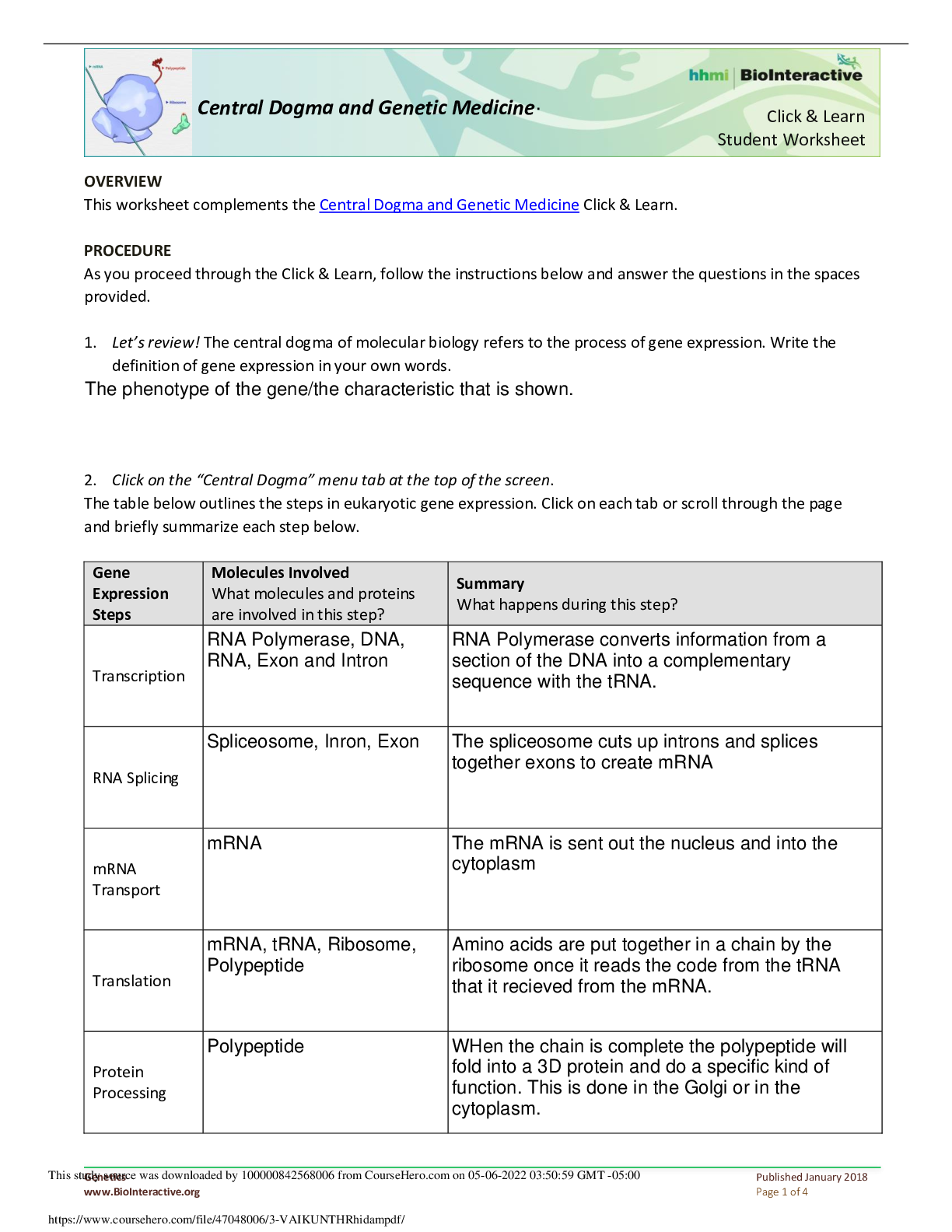
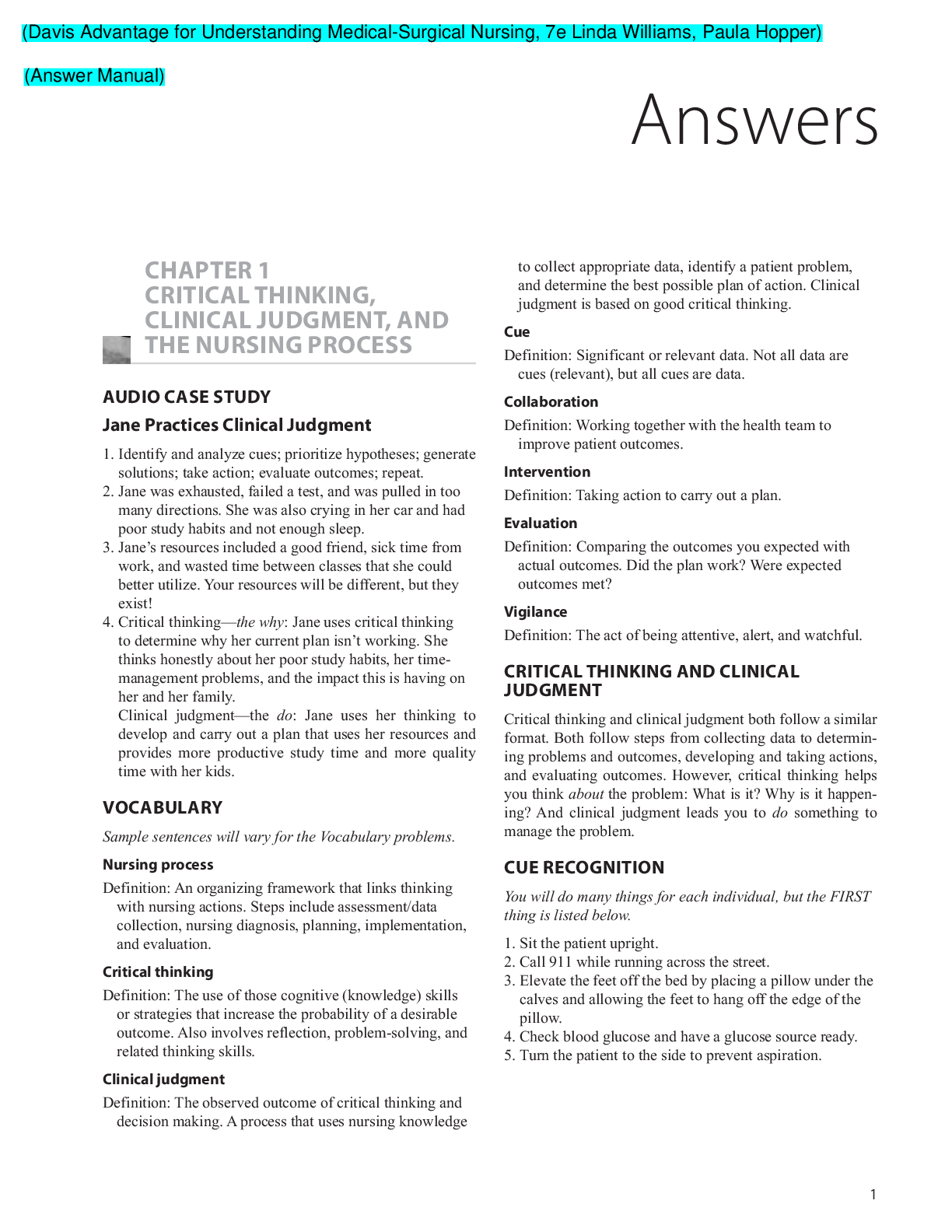


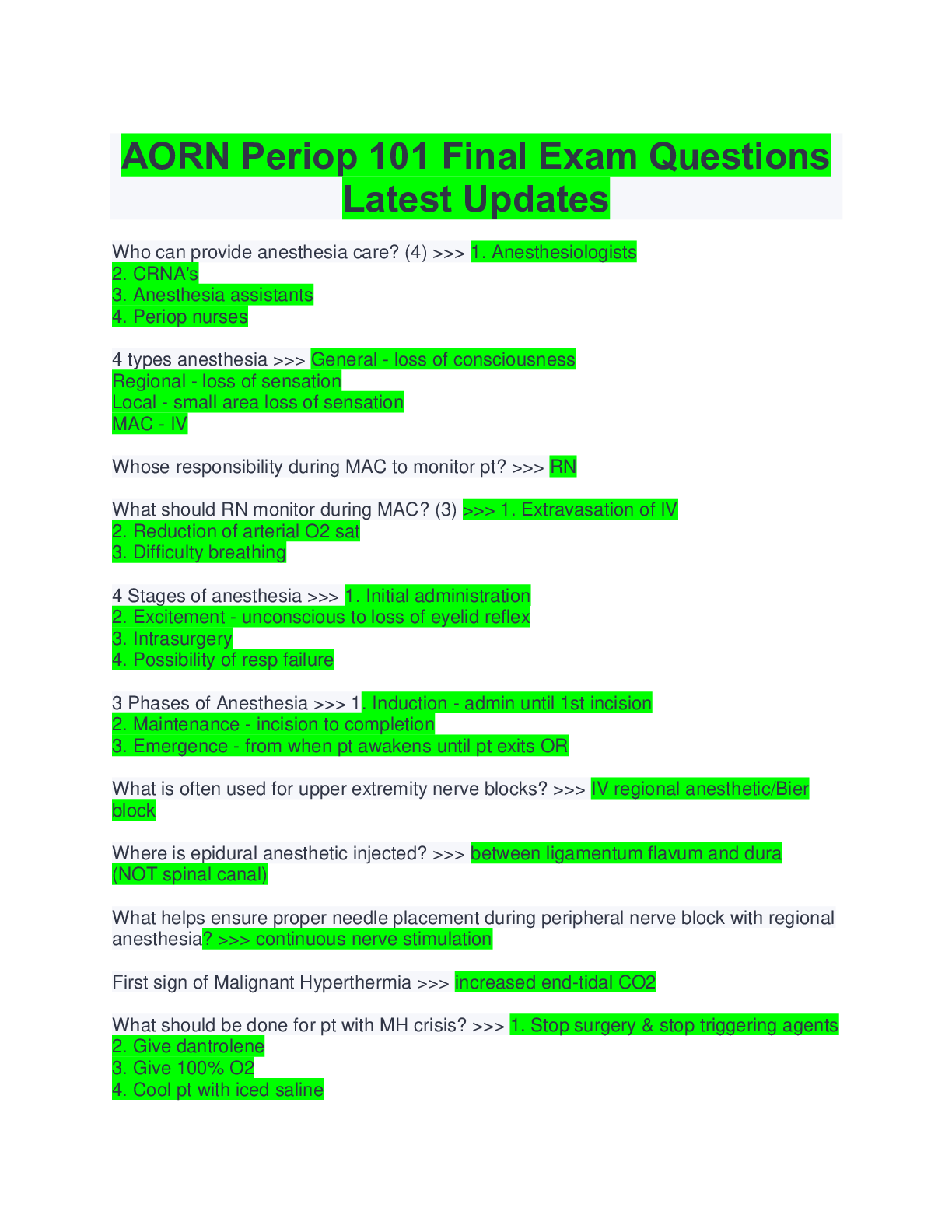










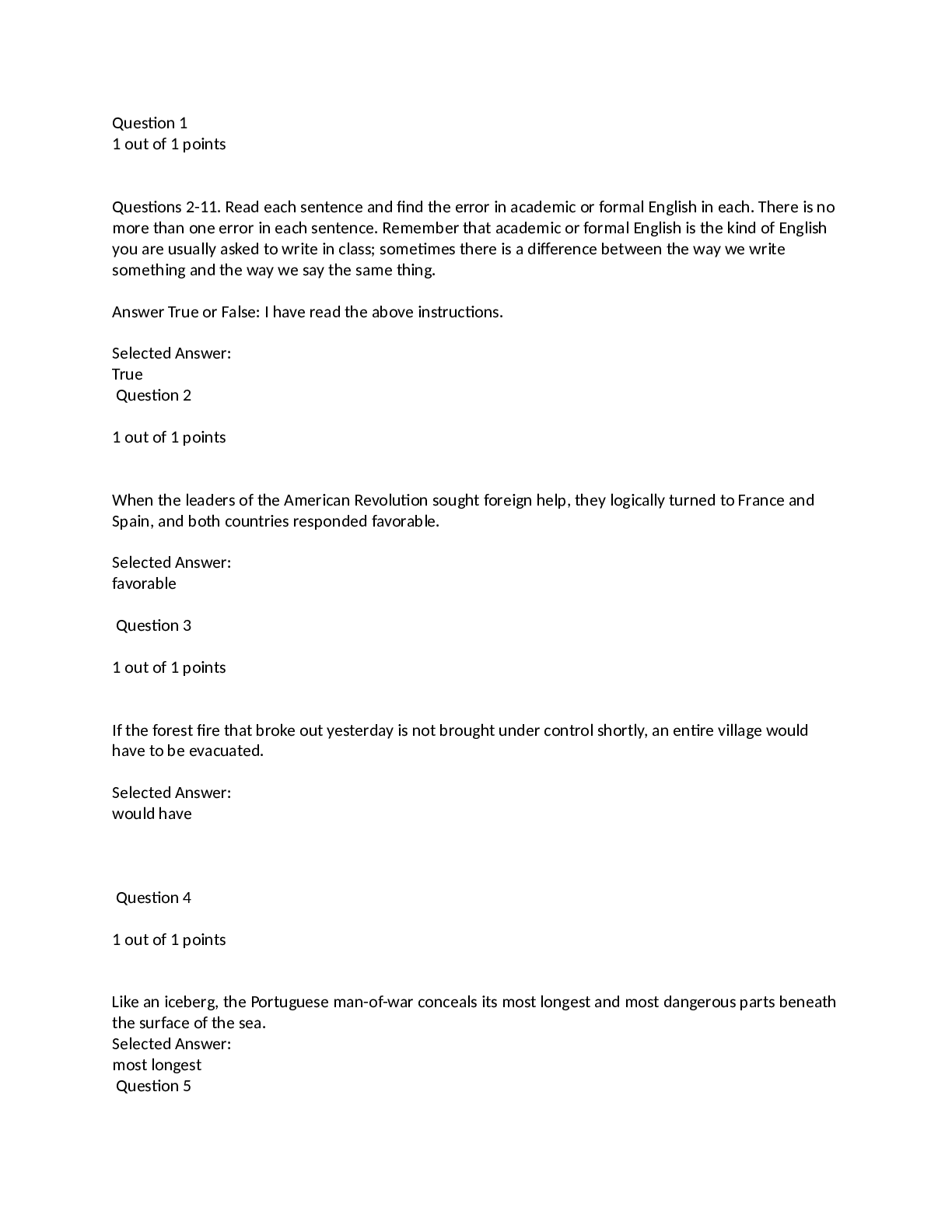
.png)

